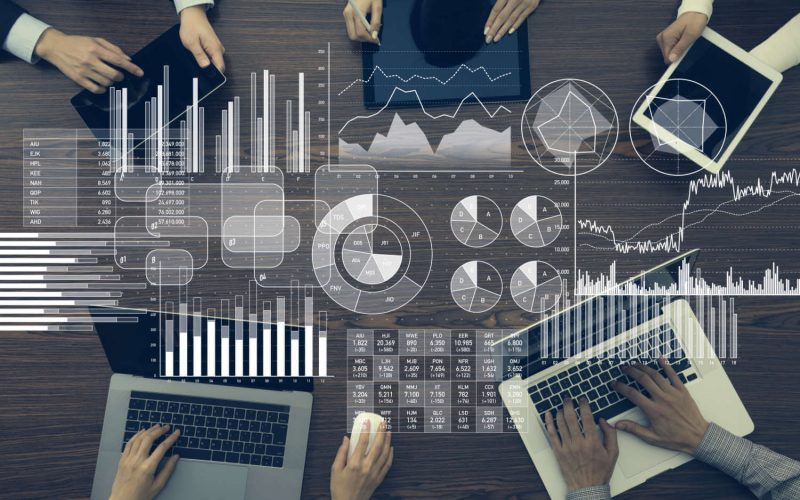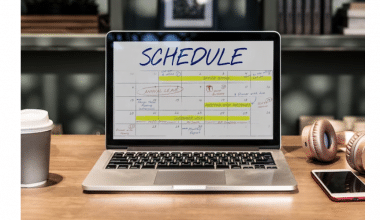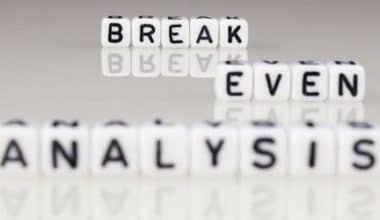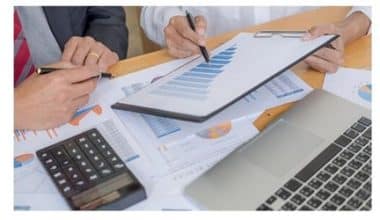Wouldn’t it be fantastic to have a glimpse into your company’s future? This is a fact with business forecasting. By combining current and historical data, you can make accurate projections for future trends and forecasts. With this expanded visibility, you’ll be able to assess your entire organization with complete confidence in the data. In this article, we’ll go through what business forecasting is, why it’s important, how it’ll help your company flourish, methods, types, and examples to improve accuracy and simplicity.
What is Business Forecasting?
Simply put, business forecasting is a set of tools and procedures for predicting business developments such as sales, expenses, profits, and losses. The purpose of business forecasting is to establish better plans based on these well-informed predictions, assisting in the prevention of probable failures or losses.
What is the Significance of Forecasting?
Businesses benefit from forecasting because it allows them to make informed business decisions and establish data-driven strategies. Financial and operational decisions are based on current market conditions as well as forecasts for the future. Past data is compiled and examined to uncover patterns, which then helps to forecast future trends and changes. Forecasting enables your business to be proactive rather than reactive.
Read Also: Demand Forecasting: Methods, Examples, Models (+ Detailed Guide)
Forecasting may help your company succeed in three ways:
#1. Assists in Goal-Setting and Planning
Based on current and historical data, forecasting allows organizations to create acceptable and achievable goals. Basically, having reliable data and statistics to evaluate assists firms in determining exactly what level of change, development, or progress will be considered successful. Also, having these goals allows you to assess your progress and make changes to your business procedures as needed to stay on track. Certain systems, such as CRM aid visual forecasting and provide insight into things like the sales pipeline, opportunities, and more.
#2. Assists with Budgeting
Visibility into possible trends and changes aids firms in determining whether to spend their budget and attention on specific offerings. These offerings may include products, services, or internal areas such as hiring and strategy adjustments.
“Budgeting quantifies a business’s expectation of revenues for a future period, whereas financial forecasting predicts the amount of revenue or income that will be realized in a future time,” according to Investopedia.
Investopedia.com
In other words, having insights into existing business functionality as well as future expected trends and merging this information into relevant insights allows for improved budget allocation and forecasting.
#3. Assists in Anticipating Market Changes
Knowing not just what is happening now, but also what might happen in the future, allows organizations to make changes to their business strategy and existing operations to improve their results.
Forecasting enables firms to become proactive rather than reactive. It’s critical to readjust to the market as a whole and optimize resources to stand out from the competition if a trend is projected to take over the industry or data shows changes in customer behavior.
Read Also: Business Intelligence Analyst: Job Description, Certifications & Salary In the US
Types of Business Forecasting
Each forecast is focused on a different statistic or outcome. The form of forecast you pursue will to a large extent, depend on what you want to know or anticipate about the future. So basically, business forecasts can range from the broad (sales for next month) to the extremely precise (sales for next year) (consumer demand for a specific product for the 2022 holiday season).
With that out of the way, let’s take a look at the different types of business forecasting one after the other with examples.
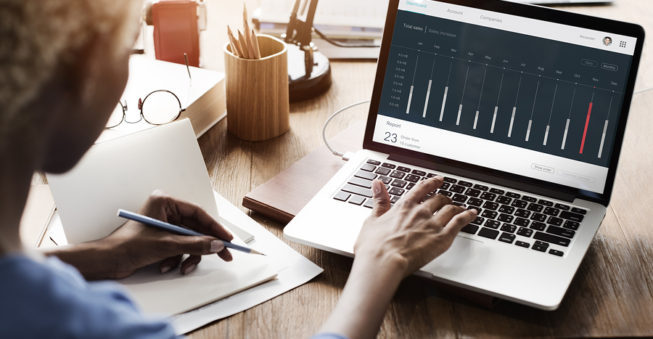
#1. General Business Forecasting
The environment, as well as the wider ties to the economy, community, political climate, and a variety of other elements, have an impact on all businesses. A general business forecast is used to predict the overall business climate for a future date, and it can be useful for a wide range of enterprises and industries.
Used for: Identifying overall market conditions as well as the impact of environmental factors on your company’s operations.
Most Suitable for: Companies that operate in highly influencing contexts, such as countries that are experiencing political upheavals, significant technology developments, or dramatic seasonal fluctuations.
One of the numerous examples of this type of business forecasting:
Analyzing the influence of the 2020 U.S. Presidential election on the overall economy of the United States.
Read Also: Demand Forecasting Software: Best 2023 Practices and All you Need
#2. Sales Forecasting
Based on sales data, a sales forecast anticipates future sales, whether overall or for a single product or service within your company’s offers. Sales forecasting enables your company to predict future workforce, resources, cash flow, inventory, and investment capital requirements.
Furthermore, it shows how much money your company is likely to make over the following month, quarter, or year of the sales cycle.
Used for: Estimating growth and cash flow, as well as predicting revenues for a future period of time.
Most Suitable for: Companies that rely primarily on sales history or need to forecast sales for investors or funding.
One of the numerous examples of this type of business forecasting:
Estimating revenue for the fiscal year 2023 in order to calculate the number of salespeople to hire and their commission structure.
#3. Demand Forecasting
Demand forecasts and sales forecasts will go hand in hand, as demand forecasts will anticipate what the market needs or wants, while sales forecasts will predict how your company will be able to capitalize on those demands through sales. for the most part, demand projections can tell you how many clients in your target demographic are looking for your product in the coming quarter. And more importantly, how much they’re ready to pay for a particular service.
Used for: Predicting future market and customer demand for a product or service.
Most Suitable for: Ascertaining how much to invest in raw materials or inventory, as well as determining whether a new product will be successful.
Read Also: Sales Forecasting Software: 15+ Best 2023 Options(+ Free Tips)
One of the numerous examples of this type of business forecasting:
Predicting the demand for a new toy before Christmas so that you can purchase the necessary inventory.
#4. Capital Forecasting
Businesses frequently need to anticipate the amount of working or liquid capital they will have in the future. This is to help them plan for hiring, bonuses, improvements, or investments, as well as other developments that may rely on the cash available. But because it includes guessing at a variety of elements, capital forecasting is difficult and less trustworthy than other projections. The following elements may play a role in business capital :
- Savings & cash
- Assets
- Receivables (accounts receivable)
- Revenue
- Funding for investments
- Credit lines
Most Suitable for: Predicting money availability for a future date or event.
Best for: Businesses planning to invest, grow, hire, acquire, or make other changes that will necessitate cash.
One of the numerous examples of this type of business forecasting:
Estimating working capital for the purchase of a larger office building next year.
#5. Accounting Forecasting
An accounting forecast is the process of estimating how much your company will pay for raw materials, inventories, man-hours, utilities and rent, insurance, and other expenses in the future, based on historical and current data.
There are a variety of methods for determining this type of business forecasting. This often includes regression analysis, which uses mathematical formulas to test the relationships between multiple factors and identify trends over time. Another method is the high-low method, which uses the highest and lowest costs and drivers to create a slope that predicts where costs will fall over time.
Most Suitable for: Estimating your company’s future operational costs.
Best for: Any company that has to budget for the future.
One of the numerous examples of this type of business forecasting:
Estimating cyclical fluctuations in the cost of a seasonal product, such as fresh fruit for a restaurant.
#6. Financial Forecasting
Getting a clear picture of where your organization is headed is the goal of financial forecasting. Assets and liabilities, accounts payable and receivable, operating costs, capital and cash flow, and general market circumstances are all factors to consider. Other forms of this type of business forecasting may be included in a financial forecast.
Used for: Keeping track of your company’s overall future direction.
Best for: Any company that wants to keep track of its financial health through projections.
One of the numerous examples of this type of business forecasting:
Ensuring that your company will meet a profit target before the end of the year.
Methods of Business Forecasting
There are several methods of approaching business forecasting. We have the qualitative and quantitative methodologies, for starters. However, the following are some of the more common business forecasting methods.
Read Also: Demand Planning: Overview, Comparisons, Salaries & Jobs
#1. Qualitative Business Forecasting Methods
Consumer and professional opinion and judgment are used in qualitative forecasting. This form of business forecasting is effective if you don’t have enough historical data to draw statistically meaningful conclusions. In such cases, an expert can assist you in piecing together the bits of data you do have in order to make a qualitative prediction based on that data.
Furthermore, when little is known about the future of your industry, qualitative business forecasting is also useful. However, it’s pointless to rely on historical data if that data isn’t relevant to the unexplored future you’re approaching. This can be the case in innovative sectors or when a new limitation, such as new tax regulation, enters the market.
#2. Quantitative Business Forecasting Methods
When accurate previous data is available, quantitative forecasting can be used to predict the likelihood of future events. This strategy extracts patterns from data that lead to more likely results. Basically, in-house data, such as sales numbers, and professionally gathered data, such as census statistics, can both be used in quantitative forecasting.
In general, quantitative forecasting aims to connect many variables in order to build and effect relationships that can be used to the company’s advantage.
#3. The Average Approach
According to the average approach, all future values are predicted to be equal to the mean of previous data. Because this method relies on historical data, it might be classified as a class of quantitative forecasting. Furthermore, this method is commonly used to estimate unknown values since it allows you to perform calculations based on prior averages, assuming that the future would be similar to the past.
#4. The Naïve Approach
The most cost-effective technique in the list of business forecasting methods is the naive approach, which is frequently used as a comparison to more complicated methods. It is only used with time-series data to provide projections that are equal to the most recent observed value.
Also, this technique is effective in industries and sectors where previous trends are unlikely to repeat themselves in the future. The most recently observed value may be the most informative in such circumstances.
Business Forecasting Elements
To effectively implement the business forecasting methods above, you’d need an in-depth knowledge of the elements to be aware of.
Develop a System to Analyze the Current Economic Condition:
Before you can commence predictions, you must first develop a system to investigate the current economic situation. This will help to better anticipate sales and general business operations, consider your industry and its current position, as well as its most popular products.
Estimating Future Business Operations:
The next step is to estimate future conditions, such as the route that future events in your industry are likely to take. Again, this is based on data acquired to aid in quantitative estimations for future operations scales.
Forecasting Regulations:
Your forecast must be matched to actual results. This is the only way to find out if something is out of the ordinary. The reasons for the deviations must then be determined so that an equivalent action can be taken to fix them in the future.
Assessing the Forecasting Process:
By examining the differences between forecasts and actual performance data, you may enhance the process by refining and reviewing the data for accuracy.
Read Also: Crisis Communication Planning: Detailed Guide with Examples
Sources of Data for Forecasting
Your forecast is only as good as the information you provide. So, before you start collecting data, ask yourself the following questions:
- What is the purpose of data collection?
- What kind of information am I looking for?
- When should it be collected?
- Where is the best place to get it?
- Who will be the one to collect it?
- What method will be used to collect it?
These are the questions that will help you develop a strategy for gathering data, which is critical for business forecasting. Meanwhile, it is very possible to gather data from a variety of sources once you have your plan in place.
Primary Sources
Primary sources contain firsthand information, which is usually gathered via reporting software. These are the ones that you or the person in charge of this assignment personally collect. If you don’t have access to primary data, you’ll have to go out and collect it yourself using interviews, questionnaires, or observations.
Secondary Sources
Secondary sources contain data that has been published or gathered by others. Official government reports, publications, financial statements from banks or other financial institutions, annual reports from firms, journals, newspapers, magazines, and other periodicals are all examples.
Business Forecasting Only Goes So Far
Everyone would be reaping the benefits of their foresight if business forecasting were a crystal ball. While business forecasting is a useful tool for gaining a better understanding of what the future holds, some argue that it is a waste of time and resources.
True, you can follow the procedures and employ a variety of approaches and still make a mistake. After all, it is the future. In other words, there will never be a method to control all of the variables that can influence future events. Calculation errors and the inherent prejudices of those in charge of the process all contribute to the unpredictability of the outcomes.
But then, these hypotheses are only true to an extent.
Yes, you won’t have a crystal-clear vision of the future if you use business forecasting, but any insight into likely future patterns will provide you and your company an advantage. In the highly competitive world of business, even a modest step can be a huge step ahead.
So in any case, business forecasting is a strong tool for any corporation searching for a competitive advantage since it combines statistical and econometric models with experience, expertise, and objectivity.
Why is Forecasting Important?
Forecasting may appear to be a lot of work for an uncertain, possibly nonexistent payoff. However, there are several compelling reasons to use forecasting in your organization on a regular basis. Some of which include;
- A better understanding of internal data and business performance
- Advantage in the marketplace
- To create efficient budgets
- To improve Response time to cyclical or seasonal variations
- The ability to spot bigger patterns and connections
- To aid in the development of long-term strategy and goal-setting
Forecasting isn’t flawless, but it can help you comprehend your company’s financial situation and be flexible in a changing market. Forecasting, at the very least, encourages you to learn about your own firm and collect your own data, making you a smarter and more informed business leader.
Read Also: Business Valuation: All you need to know [Detailed Guide]
Limitations of Business Forecasting
Businesses need business forecasting because it helps them plan production, funding, and other tactics. Using forecasts, on the other hand, has three drawbacks:
- The data will always be outdated: We just have historical data to go on, and there is no guarantee that prior conditions will persist in the future.
- It’s impossible to account for one-of-a-kind or unforeseen events, as well as externalities
- Forecasts are unable to account for their own impact; Businesses’ activities are influenced by a factor that cannot be included as a variable by having forecasts, whether accurate or inaccurate. This is a knot in the mind. In the worst-case scenario, management becomes enslaved to previous data and trends rather than focusing on the current state of the business.
What Are the Methods of Business Forecasting?
The basic methods of Business Forecasting include Qualitative and Quantitative methods. However, there are other forms of these methods mentioned above.
What Are the Three Types of Forecasting?
On the contrary, there are more than three types of forecasting. These include Demand, Sales, Capital, Accounting, Financial and General forecasting. This gives us a total of six types of forecasting instead of three.
Which Is the Best Method of Business Forecasting?
The best method of business forecasting is purely based on user preference, seeing that most individuals tend to run away from numbers. In cases such as this, the qualitative method will be the best business forecasting option. On the other hand, the quantitative method gives you more to work with when forecasting, using historical data.
What Are Forecasting Methods?
Forecasting methods are techniques that help businesses to navigate through the steps of forecasting with ease.
What Is an Example of Business Forecasting?
Examples of business forecasting include analyzing the viability of facing existing competitors, estimating the expenses of recurring monthly bills, anticipating future sales volumes based on historical sales data, and allocating resources effectively.
